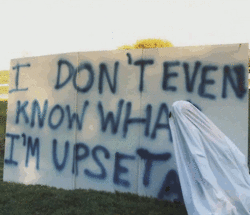And I read that the ancient Greeks were obsessed with the idea of permanence. What, if anything, was permanent? And what was transient? And I jumped out of the bath yelling "Eureka!" and made that the theme of this series.
Now, I know skulls can be seen as a bit morbid, but try not to see it that way when you look at these pictures, if you can help it. I know that to be Serious Artist you need to deal in death, mutilation and sex, preferably all at the same time, but these skulls and bones aren't supposed to symbolise death except indirectly. My work with skulls is informed by my background in archaeology, and usually refers to the past and what remains of it.
Here the skulls and bones represent permanence in the material world, and more broadly, non-living matter. The whole series is about the question of what is more permanent: the material (represented by the bones) or the immaterial (life, and the patterns passed on in the genes). The title of the series is "Ephemeral".
 |
| Covenant |
That's what this first one is about; the title refers to the "covenant" that non-living matter enters into (yes, anthropomorphising here!) when it agrees to come together for a while in set patterns to form a living creature. The rabbit's hipbones are the non-living matter, and the flower represents life - I used the most ethereal and fragile-looking one I could find. The arrangement of the flower making a division between the two sides of the animal refers to the Ancient Near Eastern tradition of formalising a covenant by cutting an animal in half longitudinally and walking between the halves. After the duration of the covenant is over, the life sometimes leaves its imprint in the non-living matter, in the form of bones that remain, and that may then become fossils which are even more permanent. It seems that the question is resolved, and that non-living matter lasts much longer than life does. But what about the descendants of that rabbit? In all likelihood, they will still be living and reproducing (like rabbits) long after those bones crumble to dust.
 |
| Temporal |
Ha ha, I made a pun. I have a sad addiction to the lowest form of humour. "Temporal" means having to do with time, temporary, not eternal. But it also refers to the sides of the head (up there, the sticking-out bits behind the eye sockets.) The watch is set to 5am (the "eleventh hour") of antiquity, and the alarm hand to 11, in honour of the last minute before the deadline - the only time I ever do anything. That is not an exaggeration.
 |
| Arrangement |
"Arrangement" - I have arranged the bones neatly and formally, in reference to the way the molecules of non-living matter are arranged according to the blueprints of DNA to temporarily form a living creature. I wish I had a more creative title!
 |
| Prey (Ambition) |
I've left my favourite till last. This one is about the other way that the matter making up a living creature gets recycled (cue Lion King music here). It is a tribute to the display in the Ditsong Museum of Natural History that has a taxidermy owl posed on top of a mountain of all the birds, rats, insects and so on that one owl eats in a year. I think it's a year, I haven't seen it for a while. The museum was the ULTIMATE TREAT for me when I was a child, besides the zoo of course. I still remember clearly how my parents let me choose what we would do for some special occasion, and how buzzing with excitement I was at the thought of going to the museum! Anyway, this is an African Scops Owl, and he was a little bit over-ambitious thinking he could eat a whole rabbit by himself. I just love his little face to bits! I want to do more owls.
Anyway, that's it for now. The last 6 in the series are much more closely linked; it's just one still life viewed from different angles over time, and I will make them another post.
